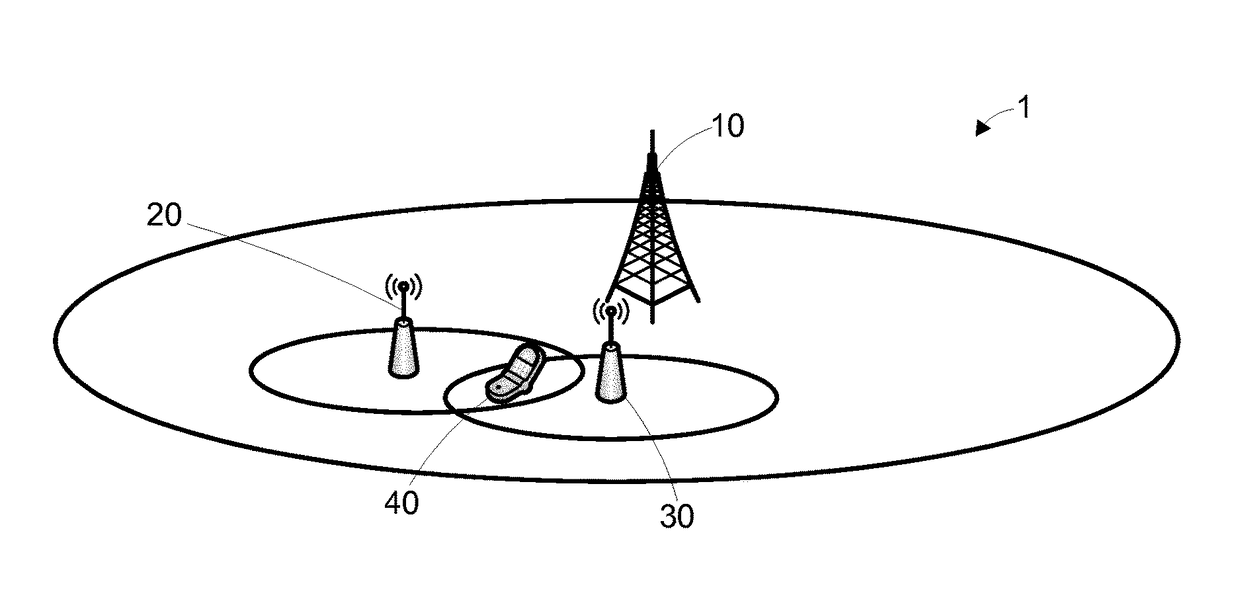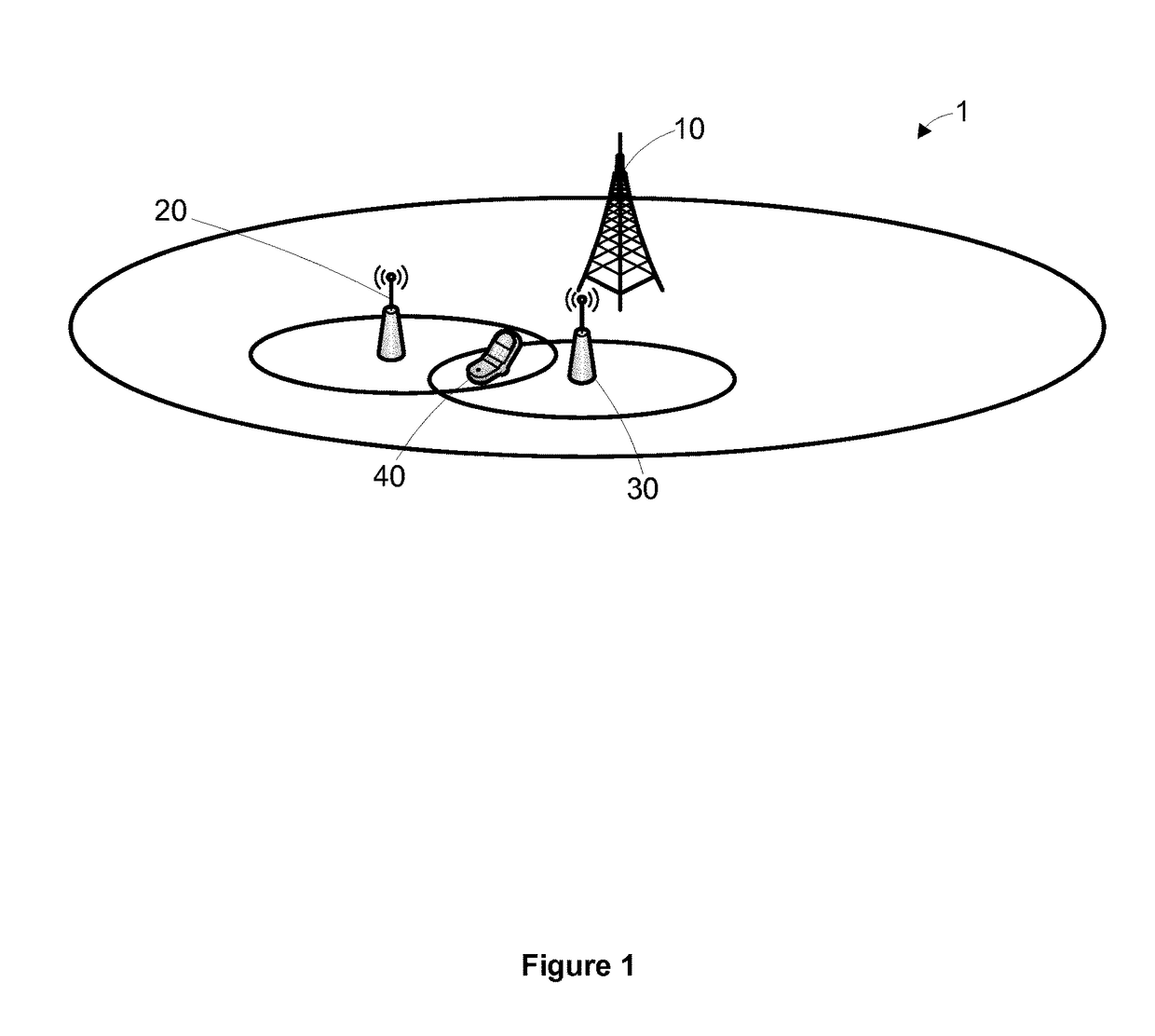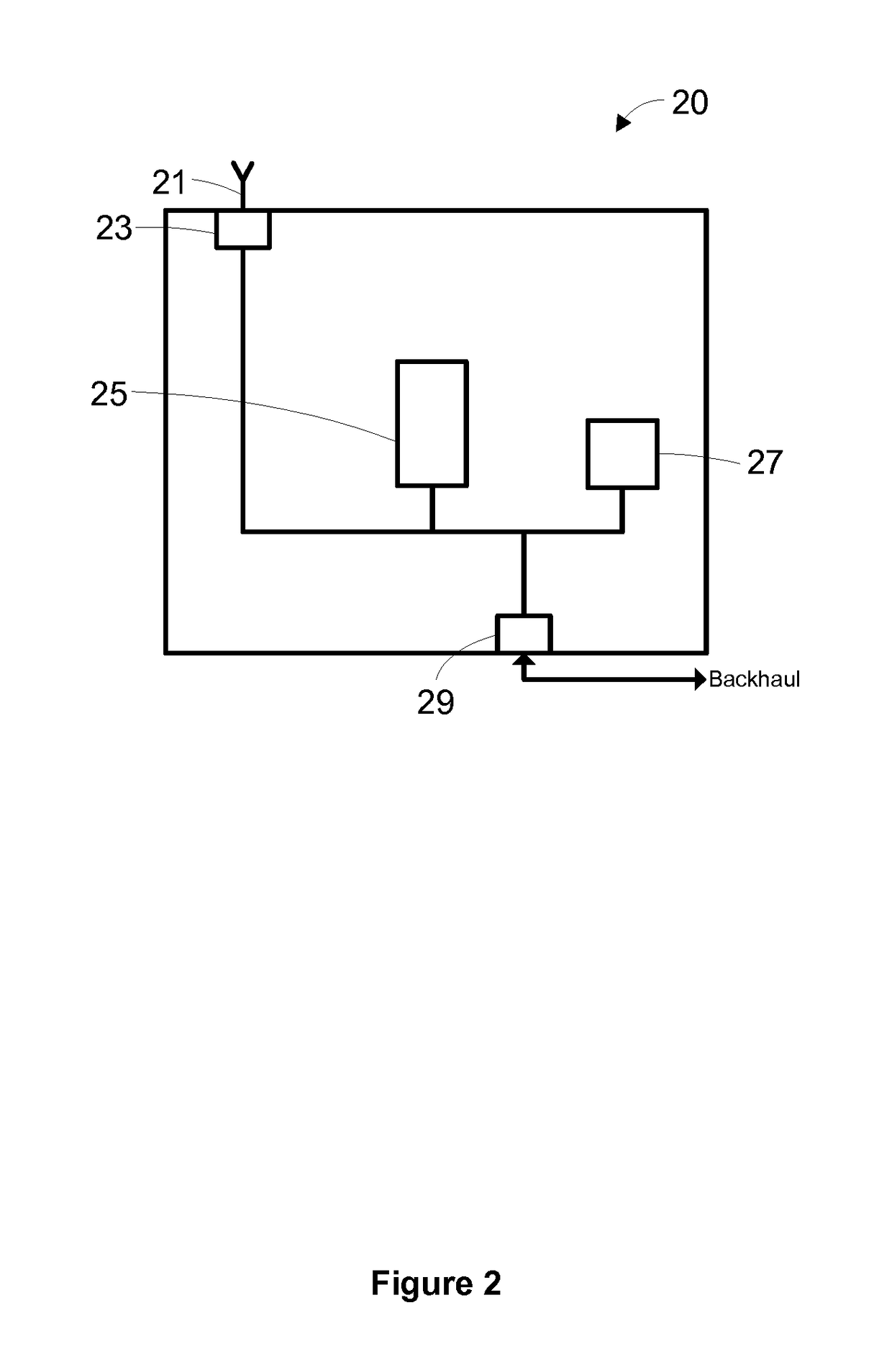Cellular communications network
a technology of cellular communication and network, applied in the field of cellular communication network, can solve problems such as great data rates, and achieve the effects of reducing pilot pollution, reducing transmit power level of base stations, and less co-tier co-frequency band interferen
- Summary
- Abstract
- Description
- Claims
- Application Information
AI Technical Summary
Benefits of technology
Problems solved by technology
Method used
Image
Examples
Embodiment Construction
[0031]An embodiment of a cellular communications network 1 will now be described with reference to FIGS. 1 to 3. As shown in FIG. 1, the cellular communications network 1 includes a first base station 10 (also known as a Node B (NB) or evolved Node B (eNB) depending on the communications protocol used) serving a large coverage area (hereinafter, the “macrocell”), a first and second femtocell 20, 30 (a form of small cell, also known as a Home evolved Node B (HeNB)) each serving a first and second coverage area, and a User Equipment 40 (UE, also known as a Mobile Terminal (MT), User Terminal (UT) or mobile). The first and second coverage areas of the first and second femtocells 20, 30 are overlapping and the UE is located within this overlapping coverage area. In this embodiment, the UE 40 is connected to the first femtocell 20.
[0032]A schematic overview of the first femtocell 20 is shown in FIG. 2. The first femtocell 20 includes an antenna 21 and RF front end 23, which together form...
PUM
 Login to View More
Login to View More Abstract
Description
Claims
Application Information
 Login to View More
Login to View More - R&D
- Intellectual Property
- Life Sciences
- Materials
- Tech Scout
- Unparalleled Data Quality
- Higher Quality Content
- 60% Fewer Hallucinations
Browse by: Latest US Patents, China's latest patents, Technical Efficacy Thesaurus, Application Domain, Technology Topic, Popular Technical Reports.
© 2025 PatSnap. All rights reserved.Legal|Privacy policy|Modern Slavery Act Transparency Statement|Sitemap|About US| Contact US: help@patsnap.com



